
Modern Homes Had Arts and Crafts Roots
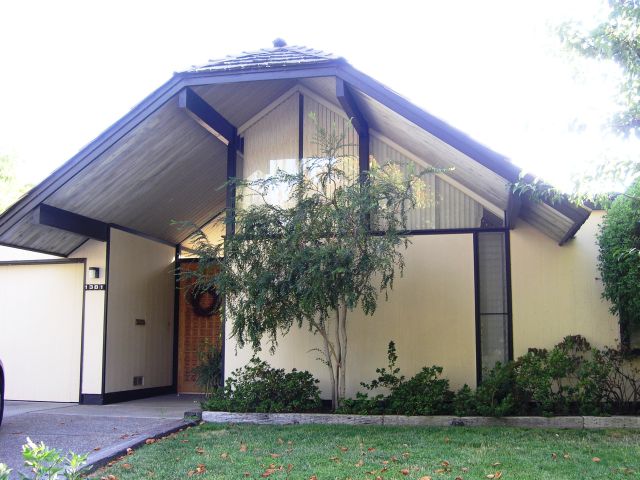 |
|
|
When people who love mid-century modern homes, such as those built by Joe Eichler and the Streng Brothers, hone in on the roots of those homes and the influences that gave them birth, they think of Frank Lloyd Wright, the European modernists of the 1920s and 1930s perhaps, and often of the tradition of Japanese wooden architecture.
But too often they forget about another root of the style – the Arts and Crafts tradition that grew up in 19th century Great Britain and flourished in the United States through the 1920s.
In some ways, though, that Arts and Crafts tradition, which was all about using design of houses and furnishings, household objects and artworks, as a way of improving life for the masses, has never gone away.
This thought came to mind while researching the recent article for CA-Modern magazine, ‘Lauan’s Lost Love.” It focused on the use of warm, beautiful mahogany panels (lauan) in Eichler and other mid-century modern homes.
 |
|
|
The author of this blog also recently gave a talk on the topic of Arts and Crafts and Mid-Century Modern design at Berkeley’s Hillside Club, a superb example of the former.
By the time research for the talk was done, not only did the speaker see a strong relationship between the two movements – they almost seemed to be two versions of the same thing.
True, in many ways Arts and Crafts and Mid-Century Modernism seem opposites. A Craftsman home is seen as warm and charming, a modern one as cold and reserved.
But consider an Eichler interior, with its warm wood, the sense of enclosure in the family room, the strong focus on the hearth. Also consider the homes that Carter Sparks, the architect for the Strengs’ Sacramento-area tracts, designed for custom clients.
Some had sunken living rooms around fireplaces, and many used extensive natural rock. Some of the tract homes too evoke the feeling of the Craftsman era through their warm wood, Asian touches, and attention to texture.
There are real differences between the two modes of thought, to be sure. The Arts and Crafts proponents were all for handmade. They eschewed factory-produced goods as dehumanizing, in some ways as inhumane.
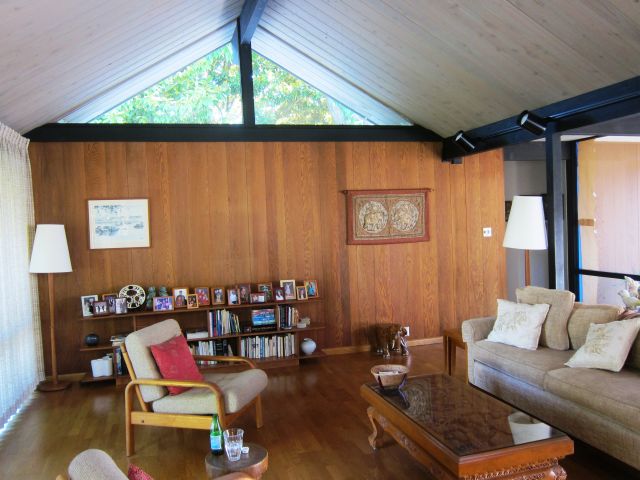 |
|
|
Modern designers, on the other hand, saw mass production as a way to efficiently produce housing and other goods that people could actually afford. The mass-assembly techniques that Eichler used are part of that trend.
More importantly, though, both Arts and Crafts and modernist theorists and practitioners shared an ultimate goal – bettering society through their designs, through good housing, useful products, ennobling artworks.
And early on, by the mid-19th century, some Arts and Crafts thinkers were worrying that their emphasis on the handmade versus factory-produced meant that working-class people couldn’t afford homes and products built by Crafstman guilds.
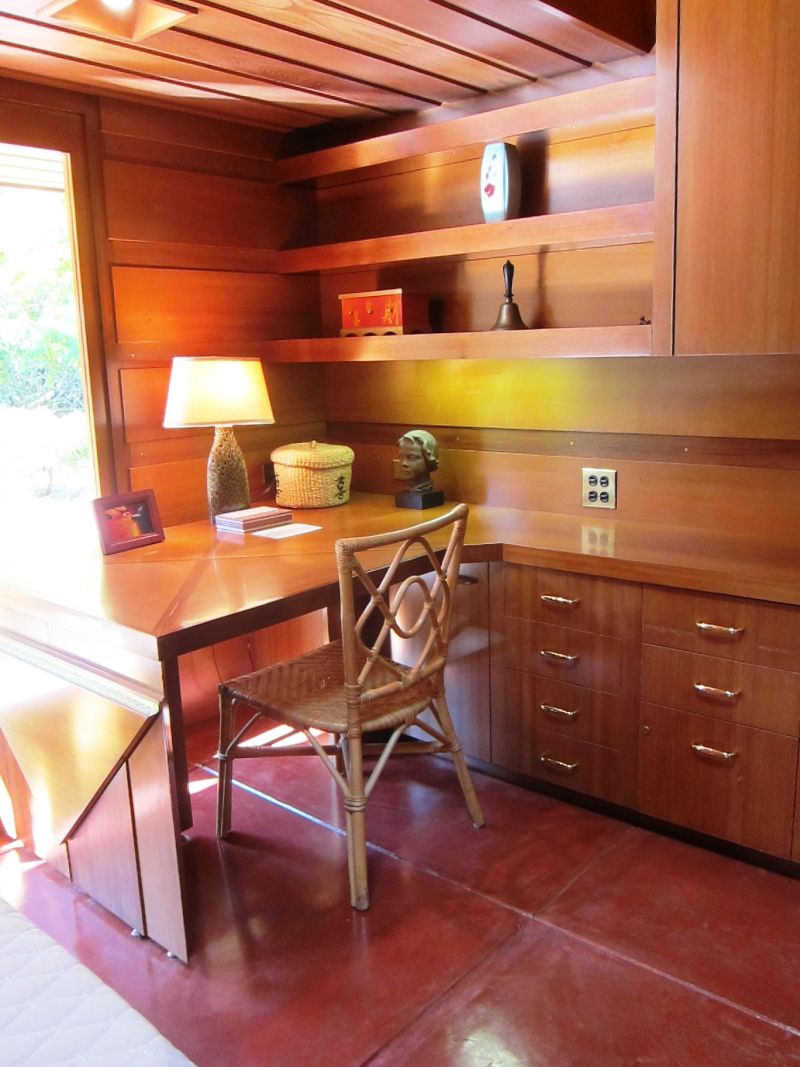 |
|
|
It needs to be said that neither Arts and Crafts nor Mid-Century Modern are “styles.” Both terms cover a wide range of looks. In the former case, these can range from early English to Spanish Colonial to Gothic, and in the latter from glass box to open-planned ranch house.
Undoubtedly the most direct tie between Arts and Crafts and Mid-Century Modern is the work and personality of Frank Lloyd Wright. His early, long and low Prairie style was clearly just another variant of the Arts and Craft Movement that was sweeping the Western World at the time.
And Wright’s desire to produce low-cost housing for workers and the middle class, and his desire to create entire utopian communities, were the same impulses behind the work of Arts and Crafts pioneers, including John Ruskin and William Morris.
It was of course Joe Eichler’s exposure to Wright through living in on of the master’s Usonian houses that resulted in the creation of Eichler Homes.
Many Eichler homes are almost explicitly Arts and Crafts in their look, especially if seen with a knowing eye. Many of his earlier homes were bathed in warm interior wood, much like a Julia Morgan or Bernard Maybeck interior.
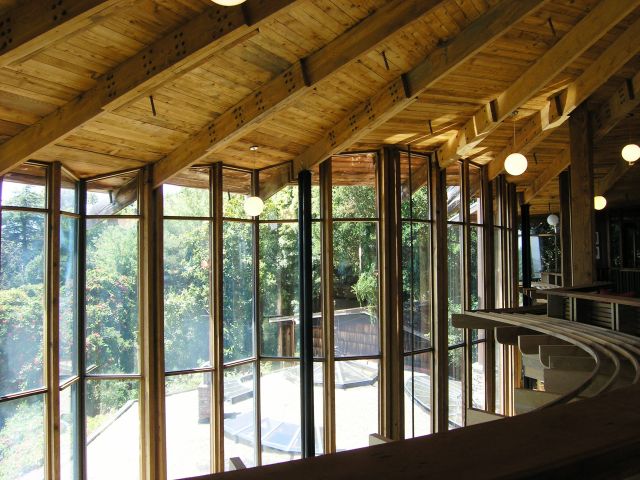 |
|
|
And many of Eichler's middle period and later homes have broad, sheltering roofs and compact, cabin-like living areas (that nonetheless expand, thanks to their open plans, into larger spaces).
Note this too: The work of many of the early 20th century Arts and Crafts designers in Northern California looks quite modern, again if viewed carefully.
Maybeck, Morgan, Ernest Coxhead, and others of their generation preferred large rooms and open planning, often uniting several rooms to create a single, flowing space. These architects also pioneered an early version of indoor-outdoor living, with sleeping porches and rooms opening easily into gardens.
Eichler’s architects, and other architects of their postwar generation, were much influenced by designers of the Arts and Crafts era, many explicitly so. Such modern Northern California architects as Jack Hillmer, Henrik Bull, and Henry Hill created houses that played up natural materials and warm interiors.
Perhaps it was Eichler’s focus on creating communities, not just overall houses, though, that best evokes the Arts and Crafts spirit.
It was John Ruskin, one of the founders of the Arts and Crafts idea, who set the tone back in the early 1870s when he inveighed against the pollution, blight, and deadening spirit of cities, and planned suburban and rural communities for workers. “We will try to make some small piece of English ground beautiful, peaceful, and fruitful,” he proclaimed.
Replace ‘English’ with ‘Californian’ and you’re talking about Joe Eichler.
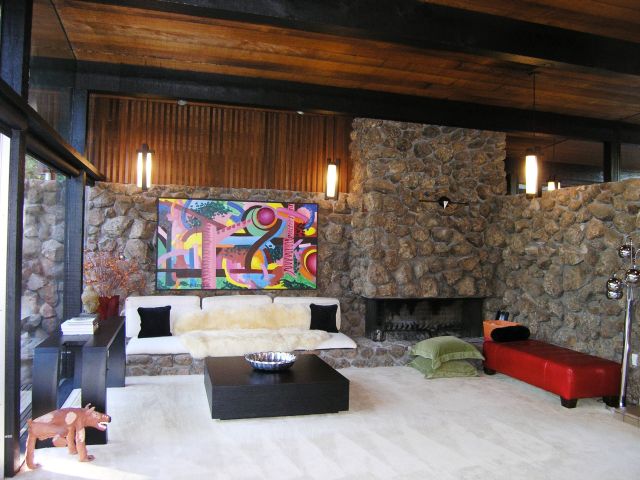 |
|
|
- ‹ previous
- 418 of 677
- next ›



